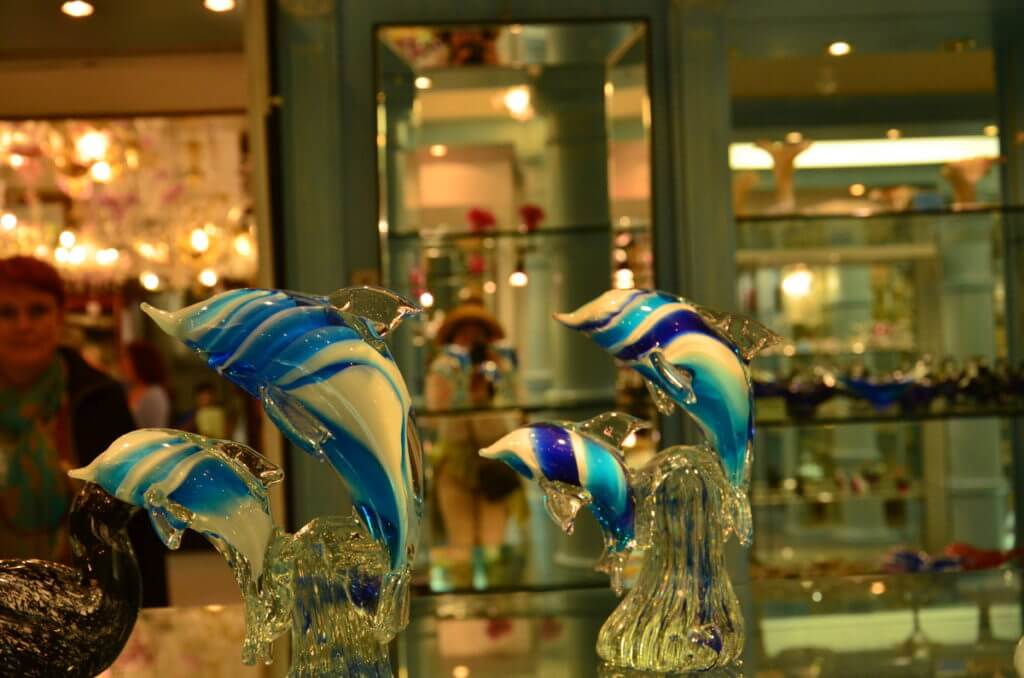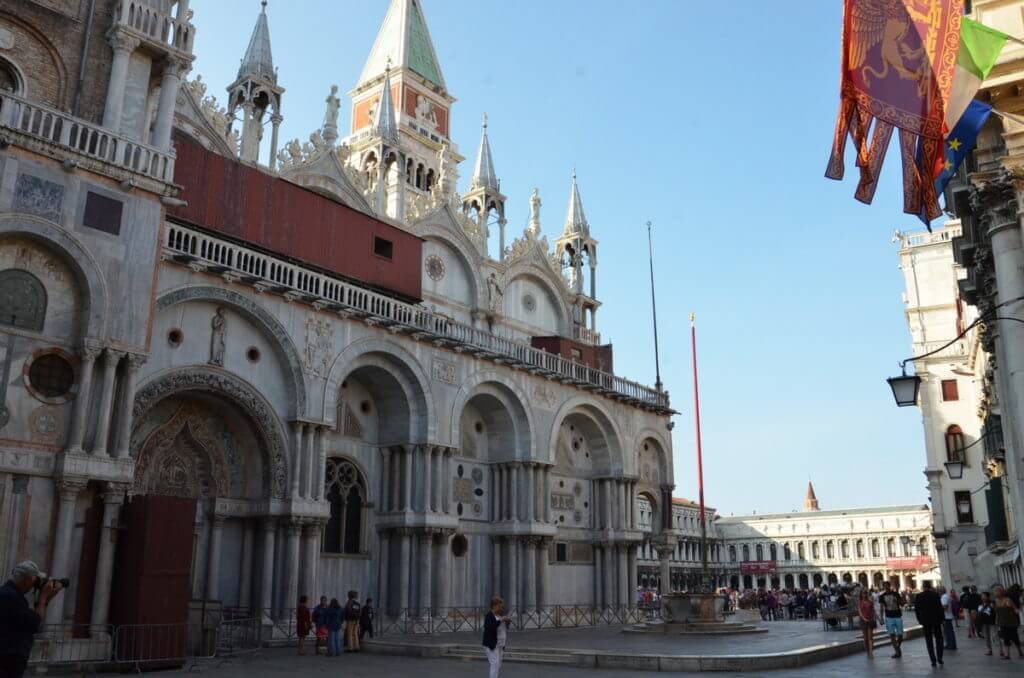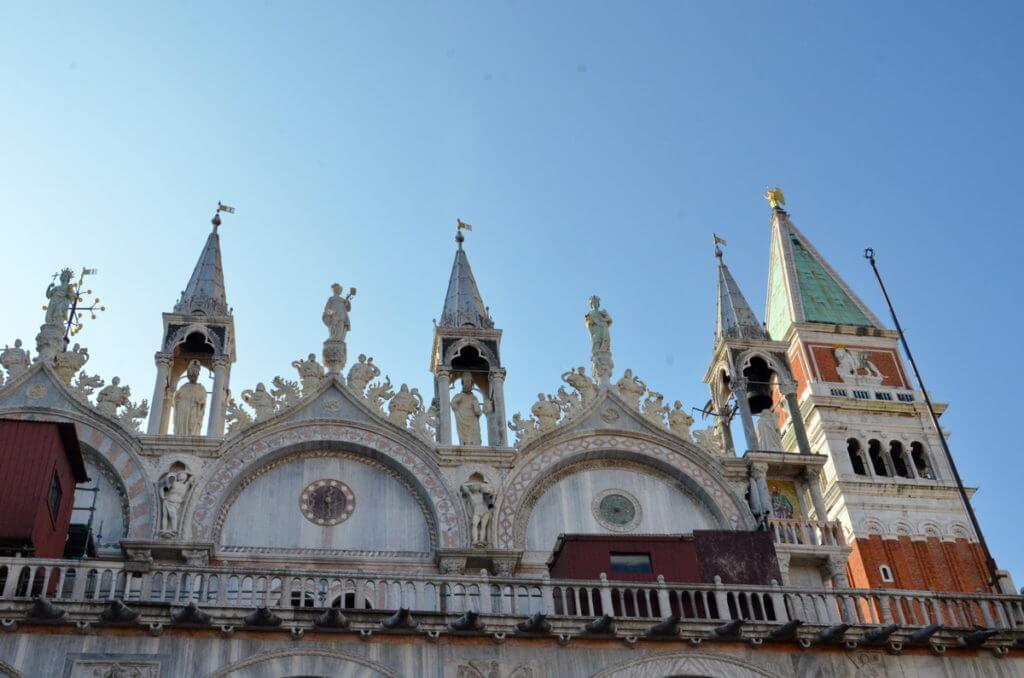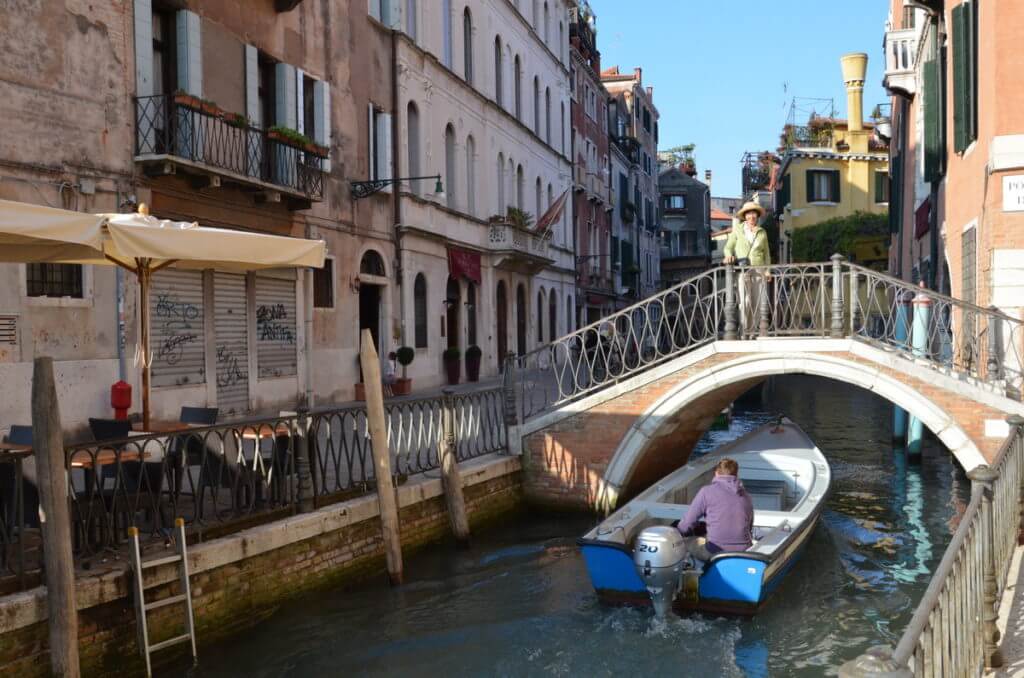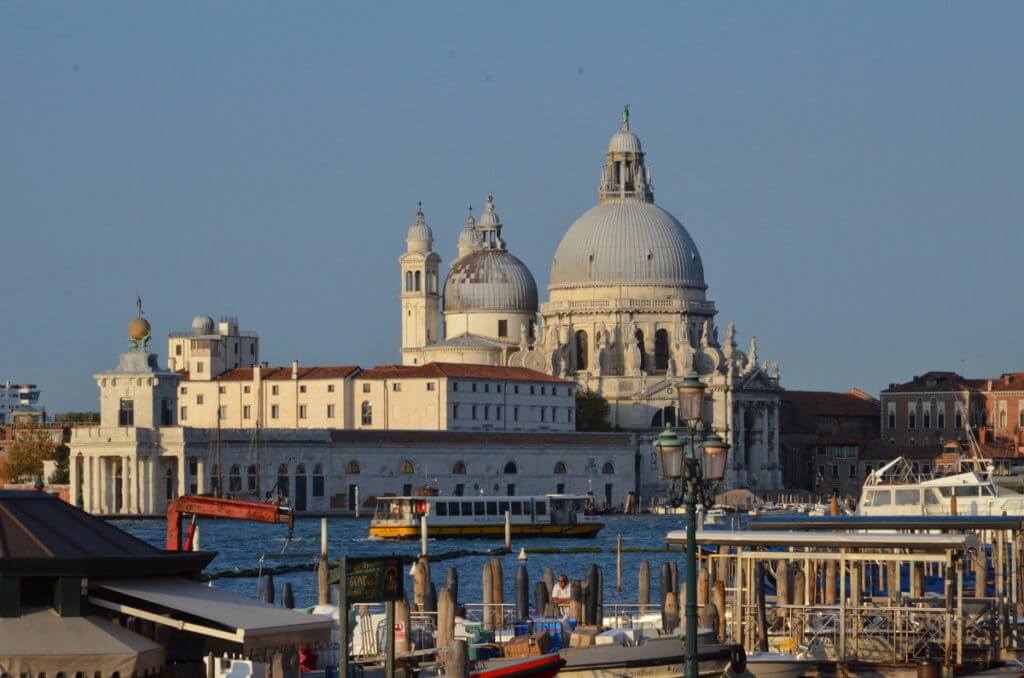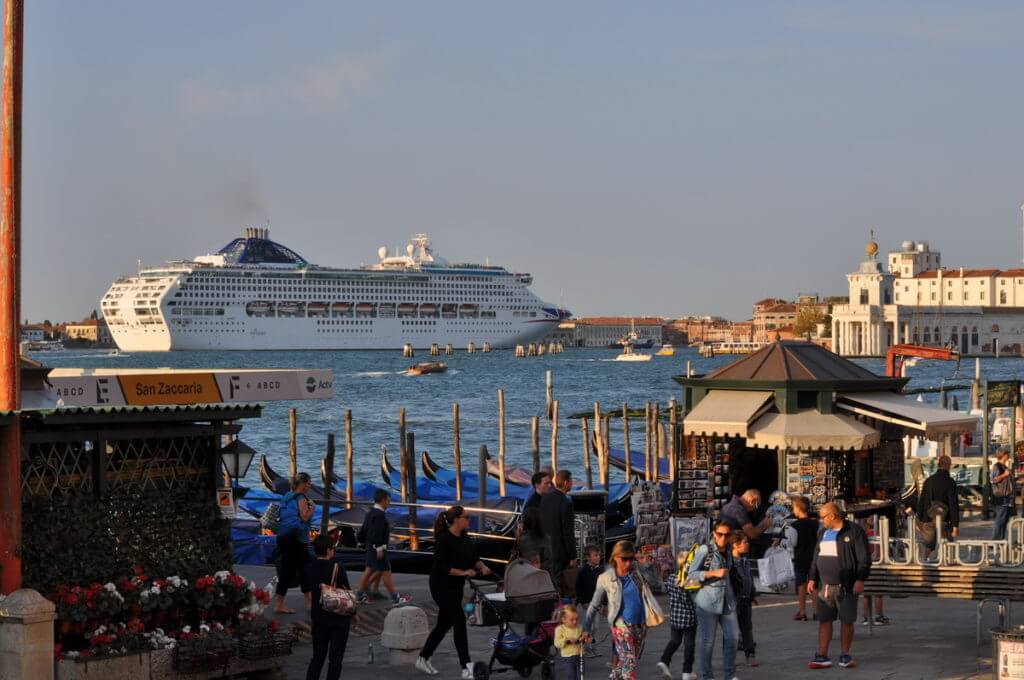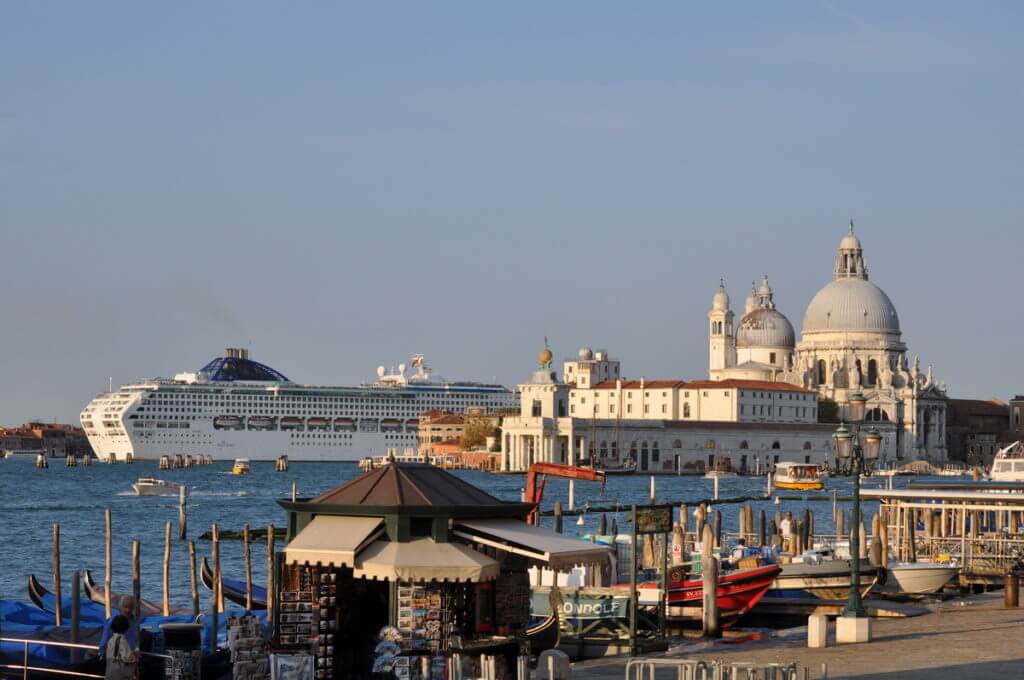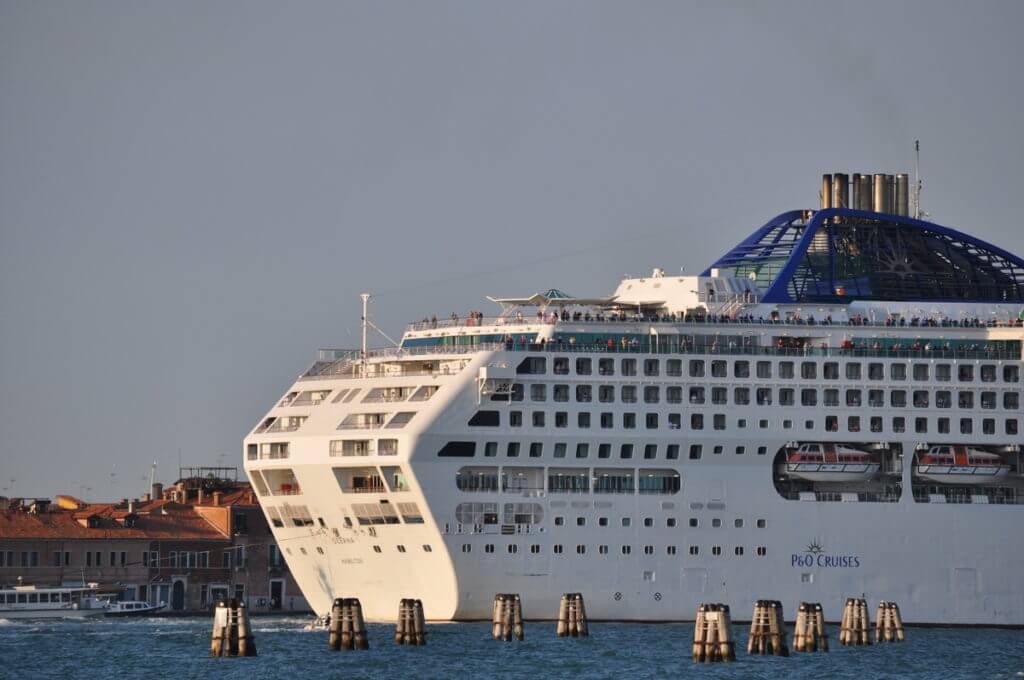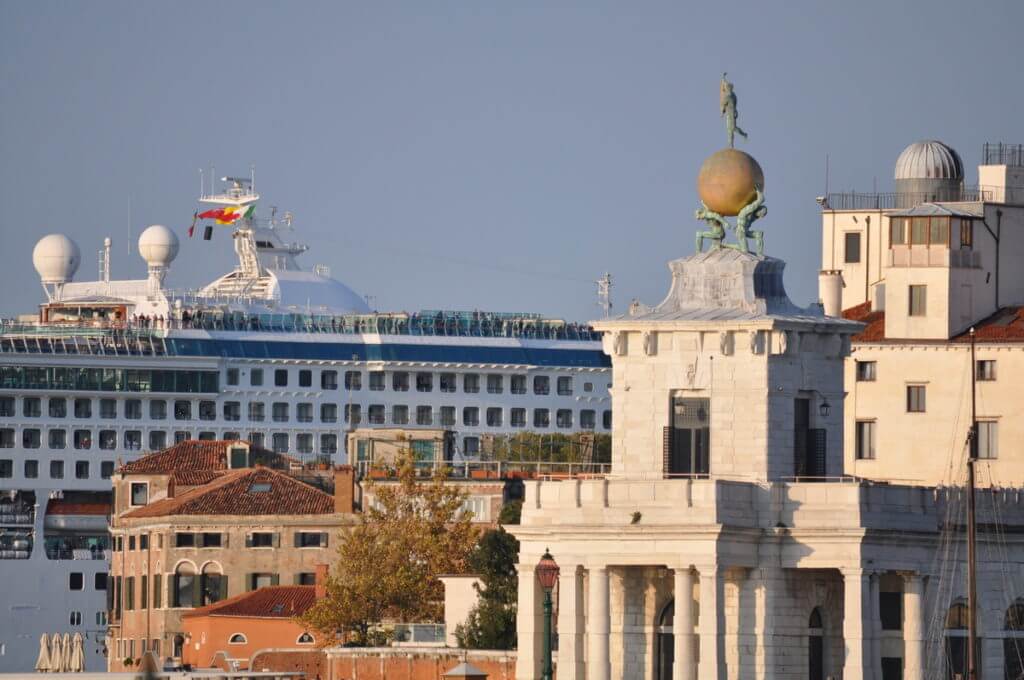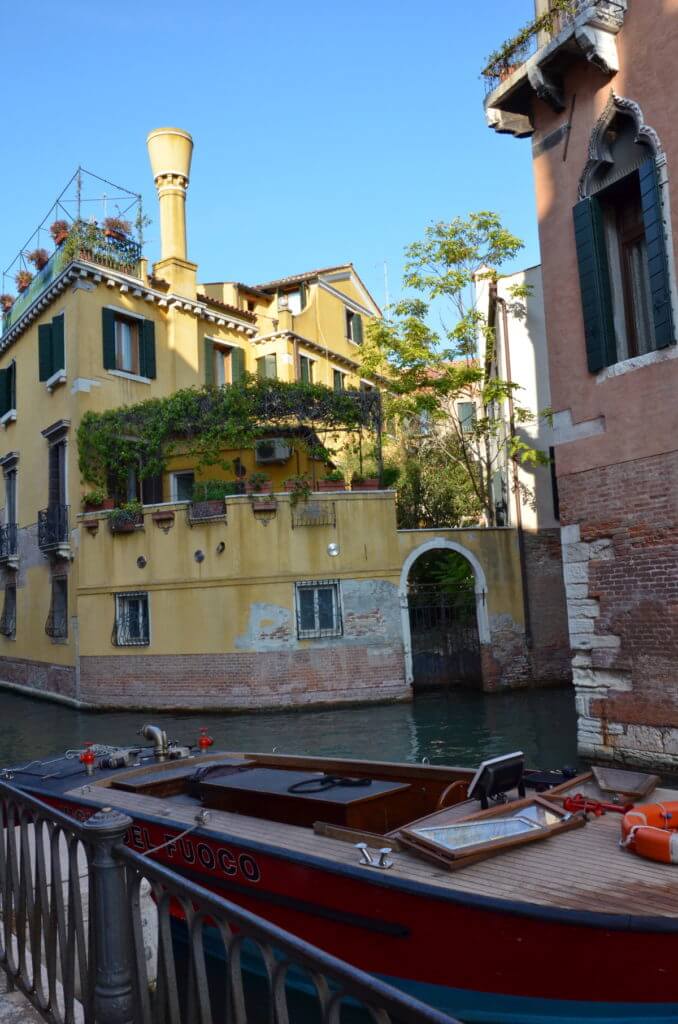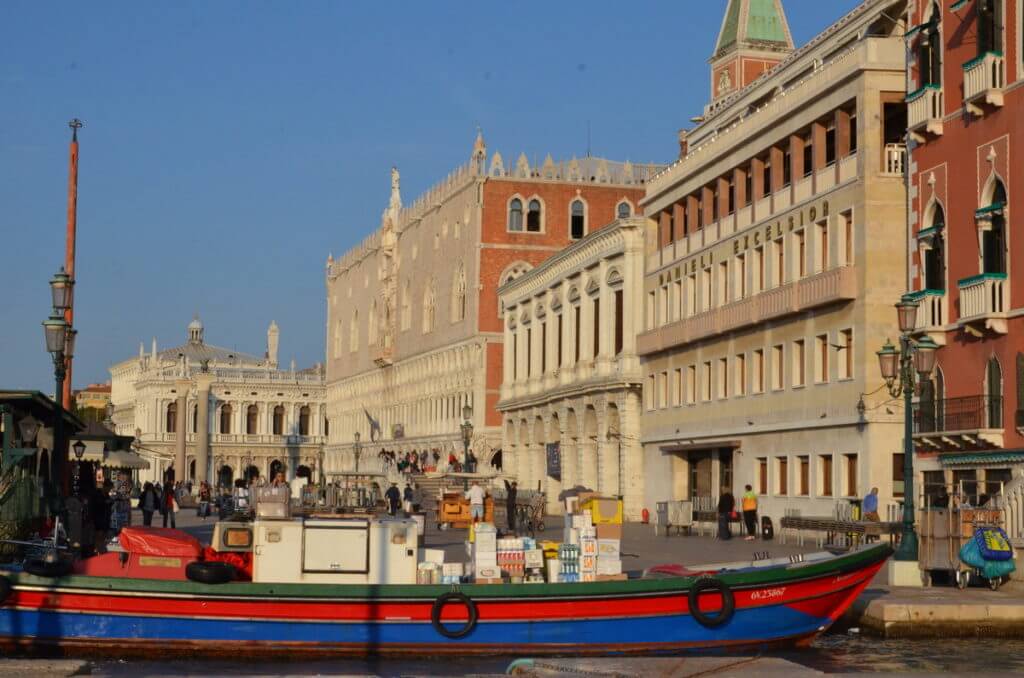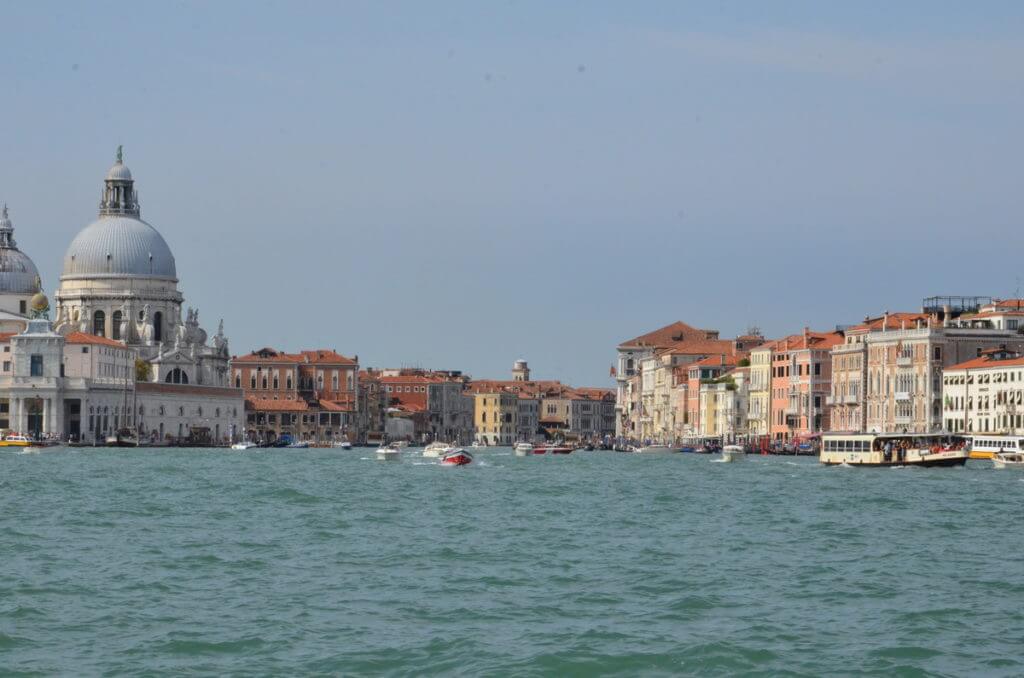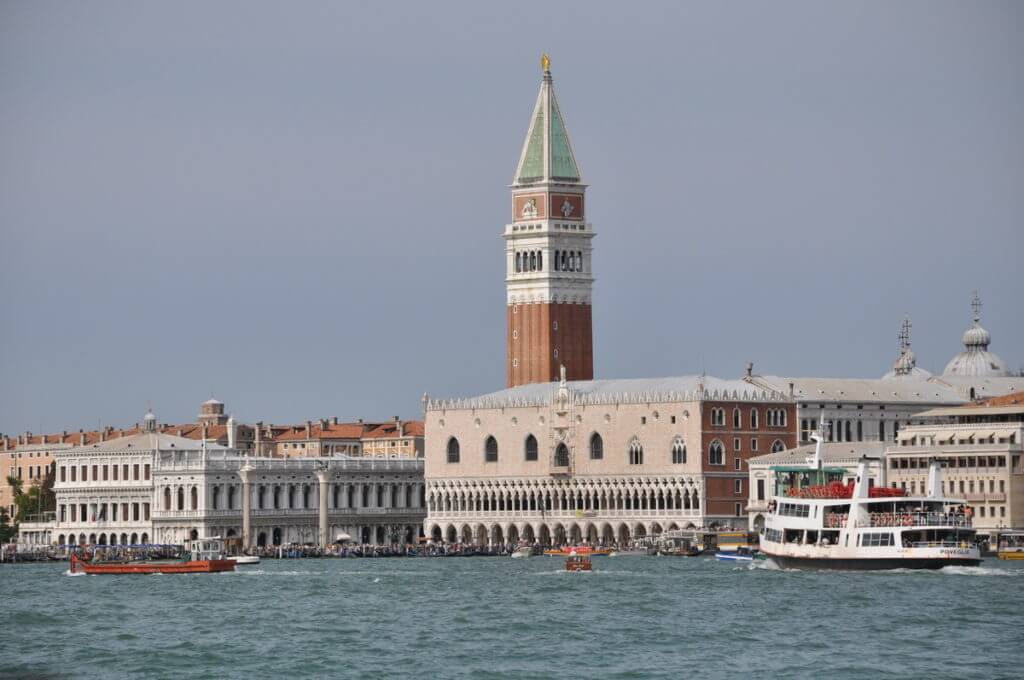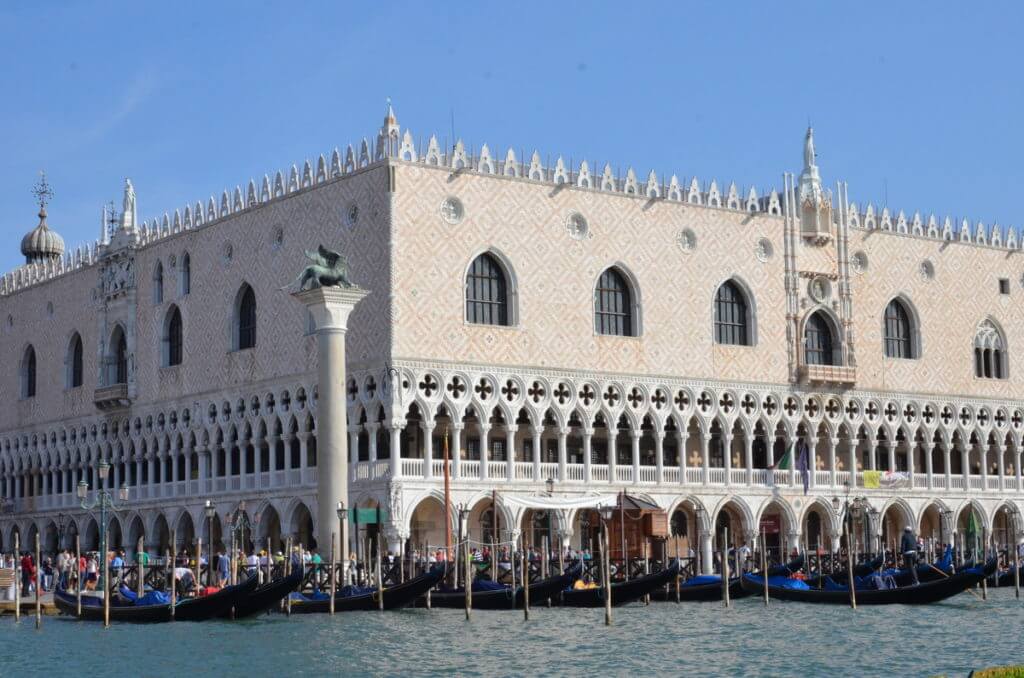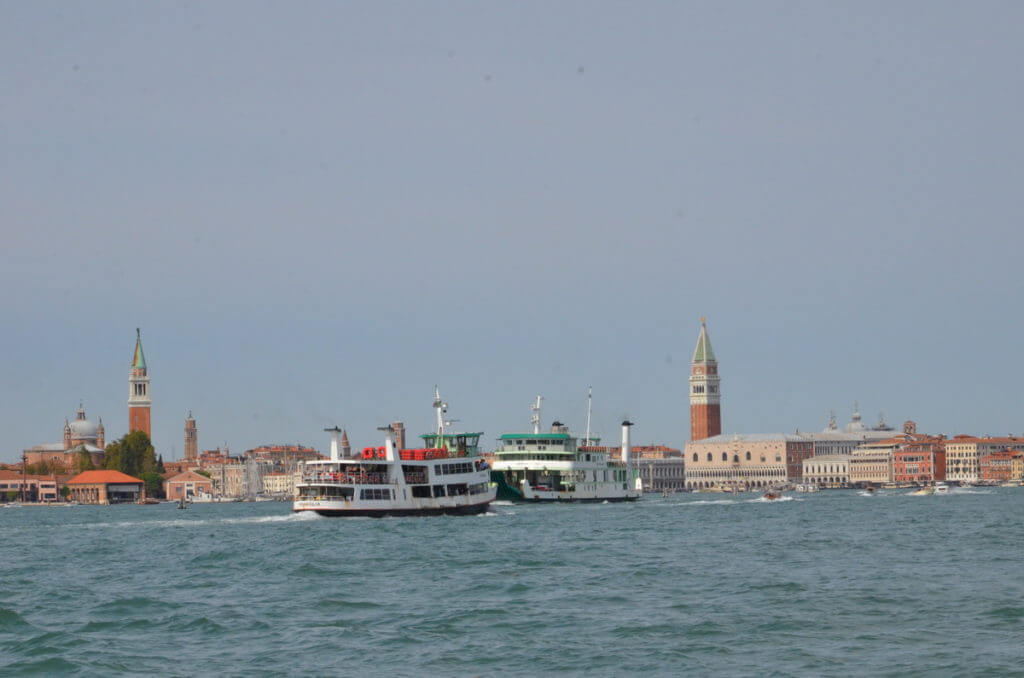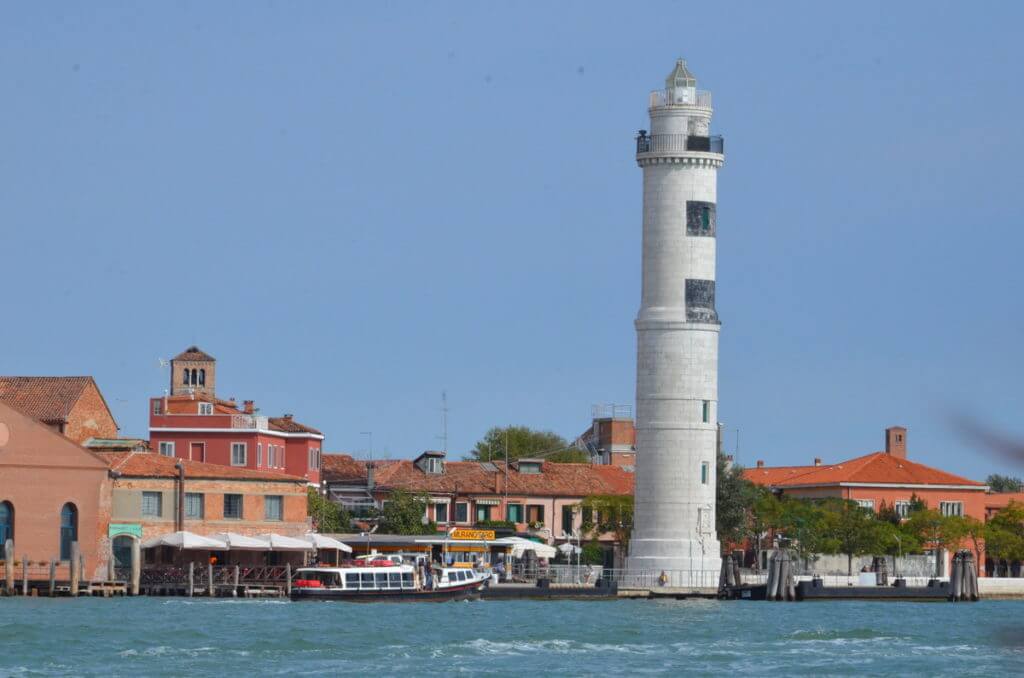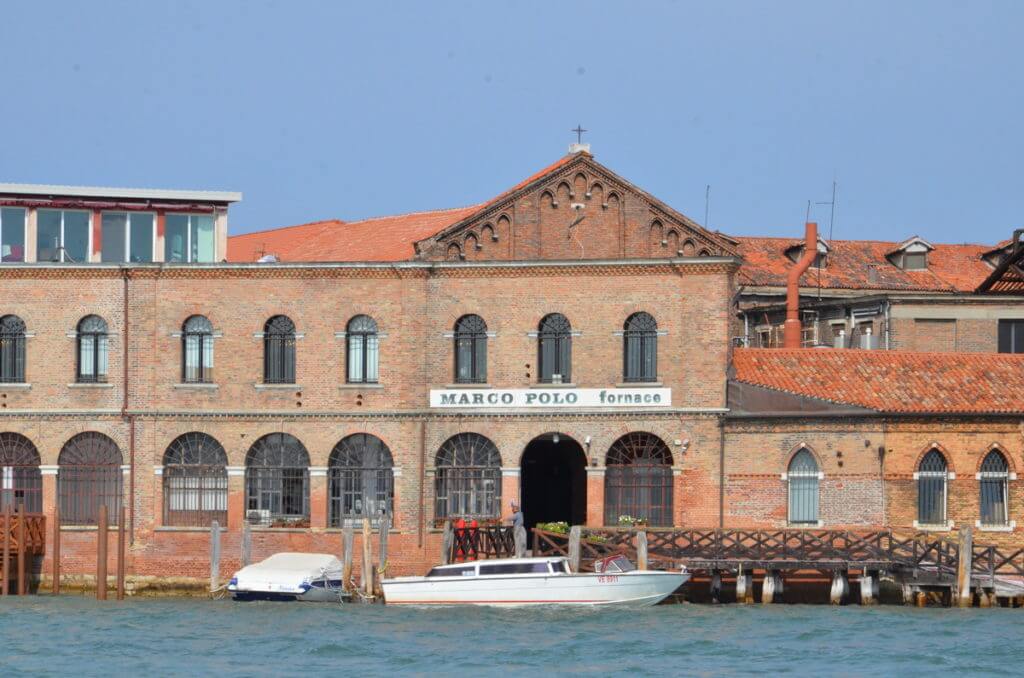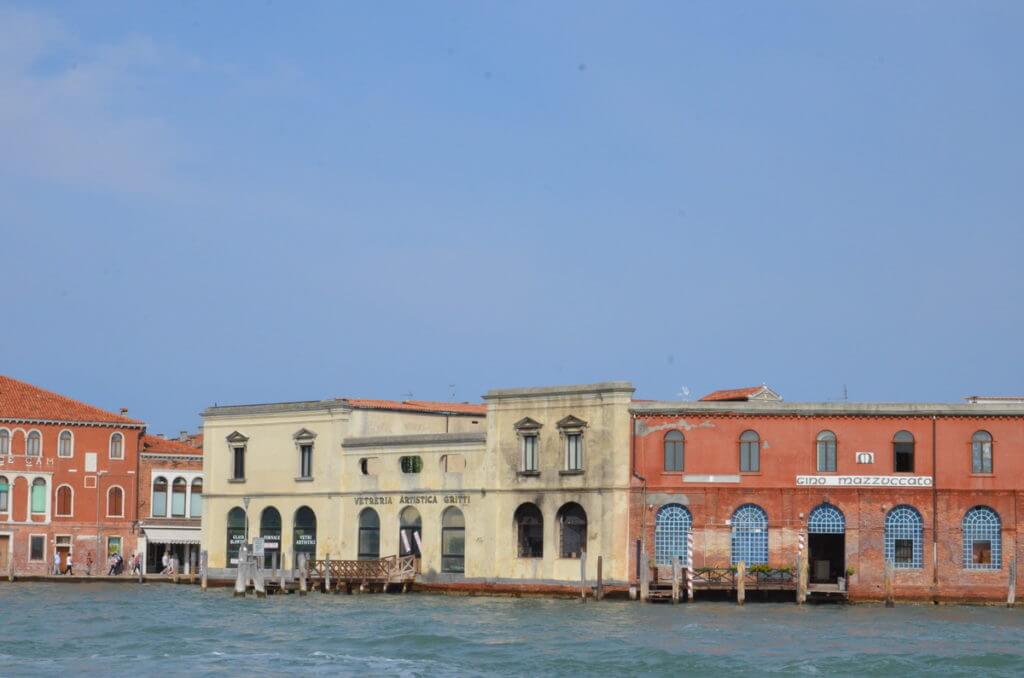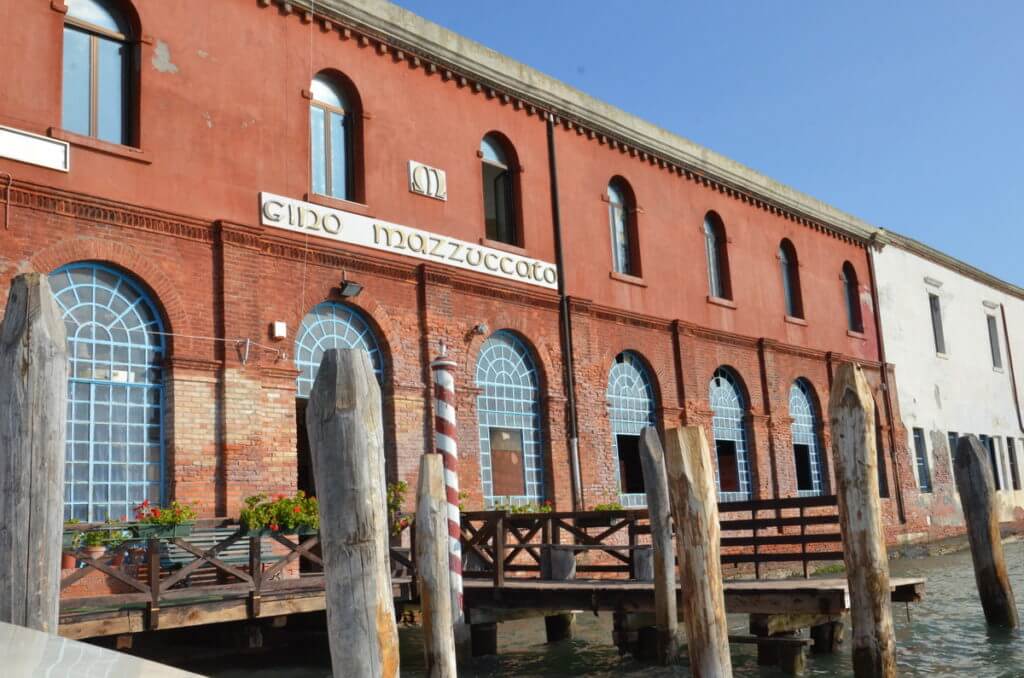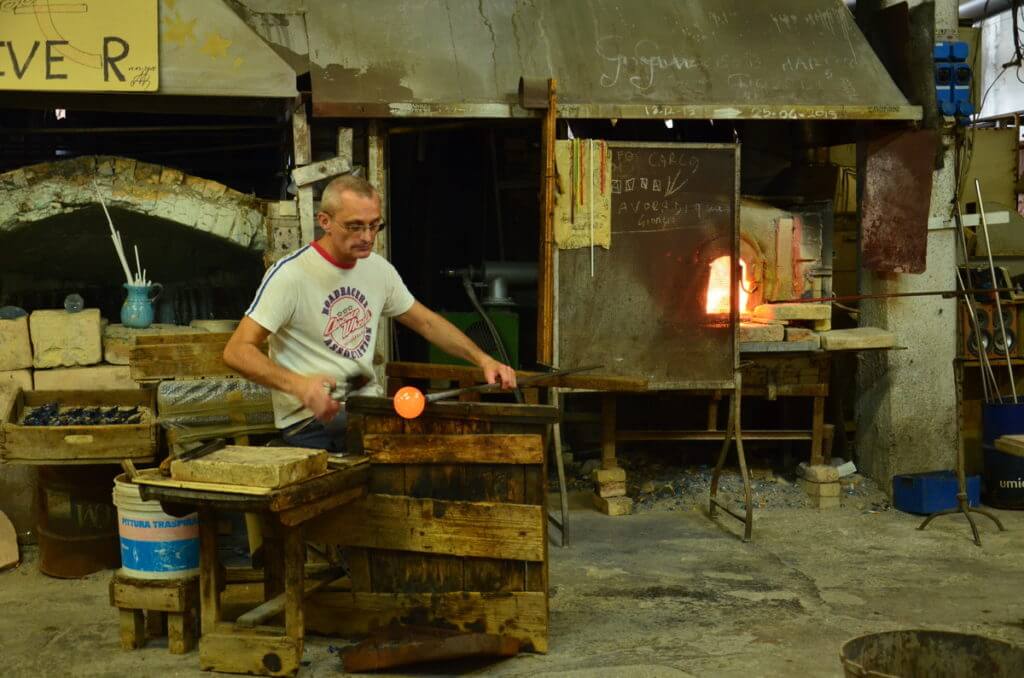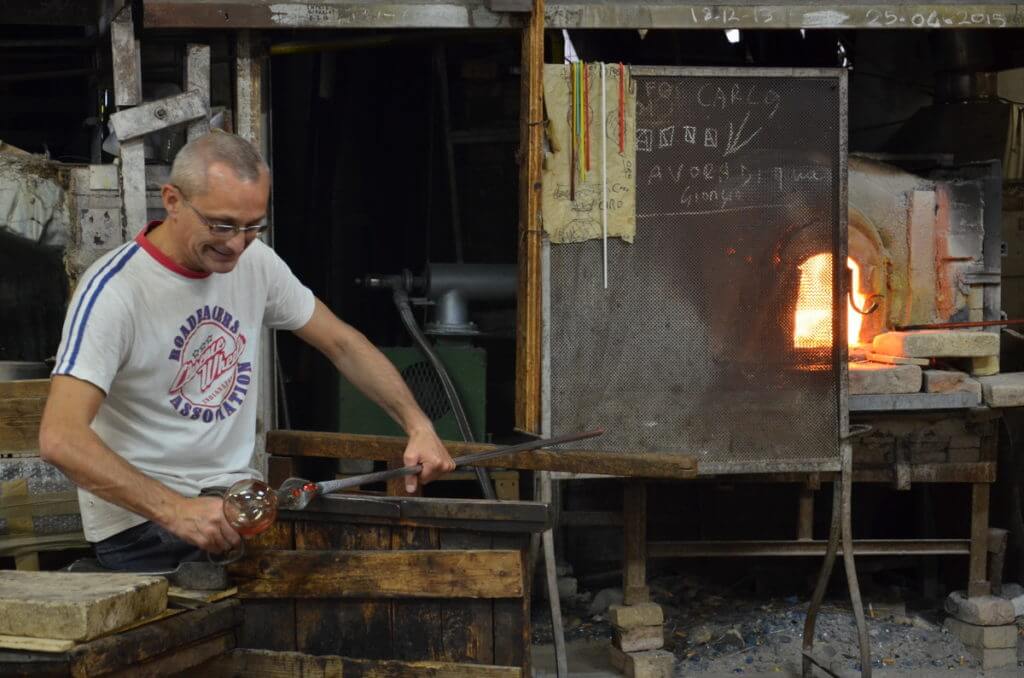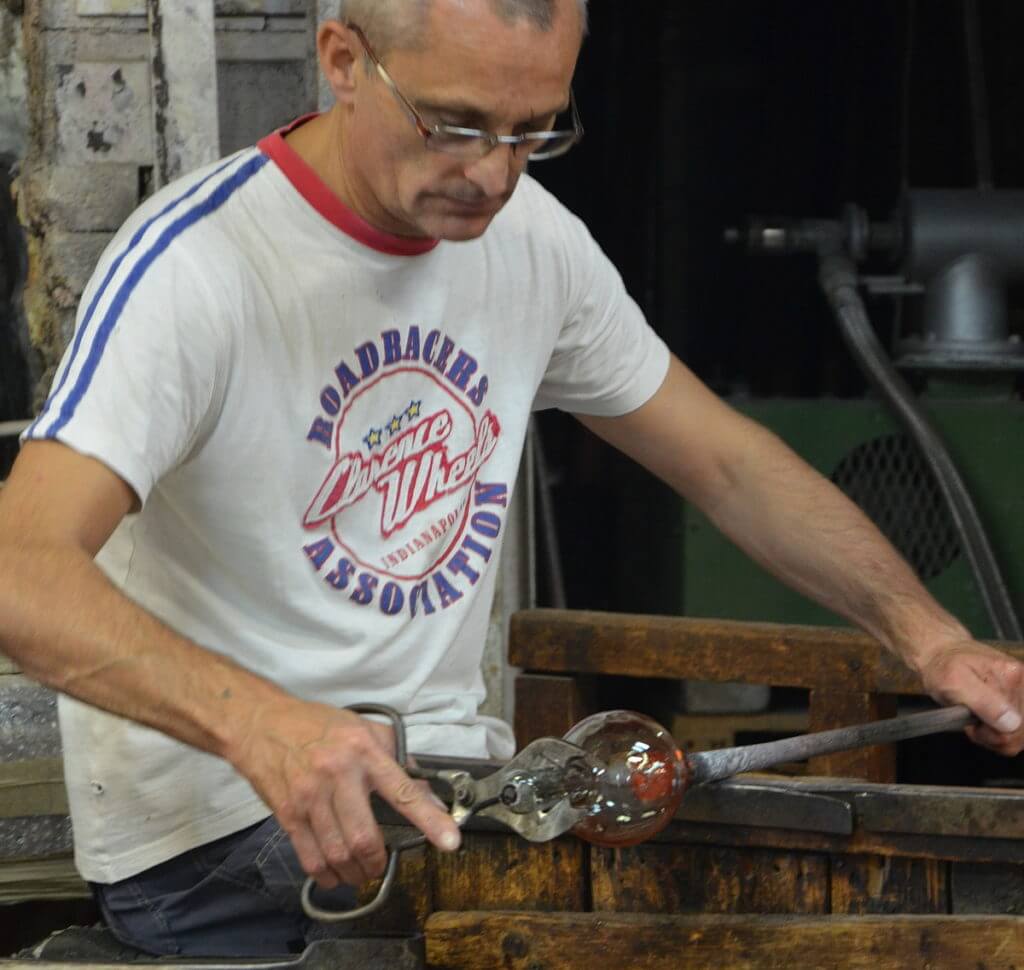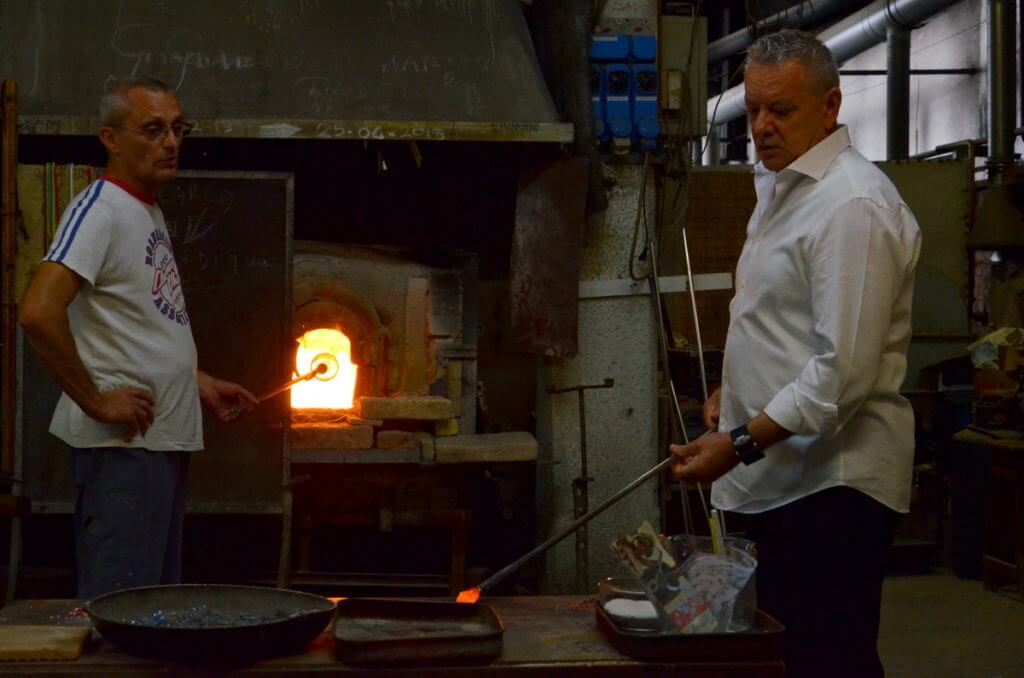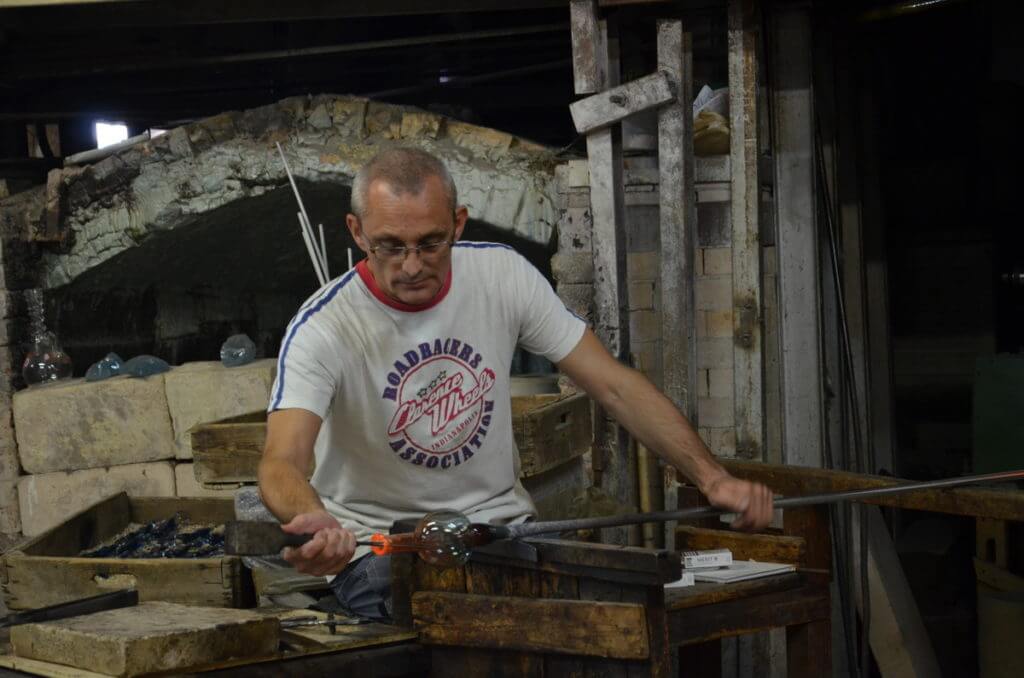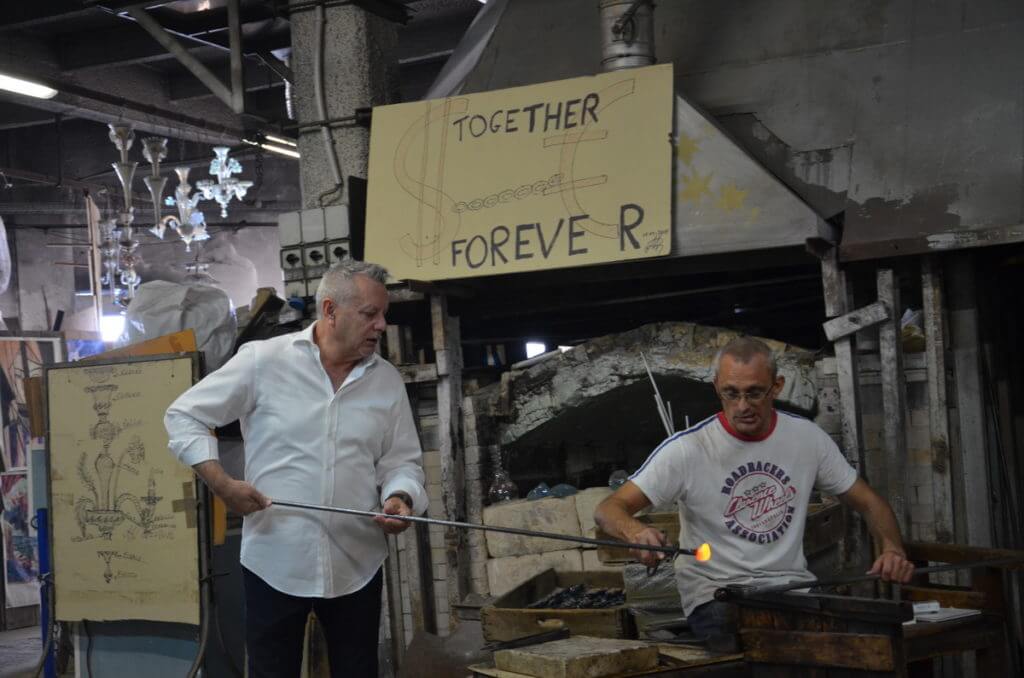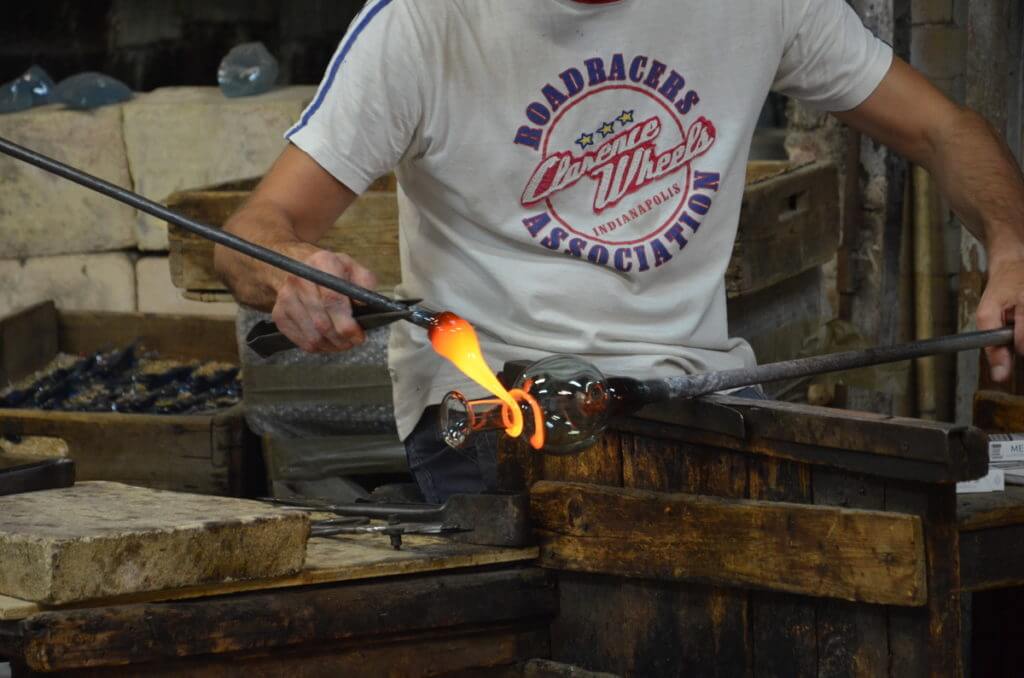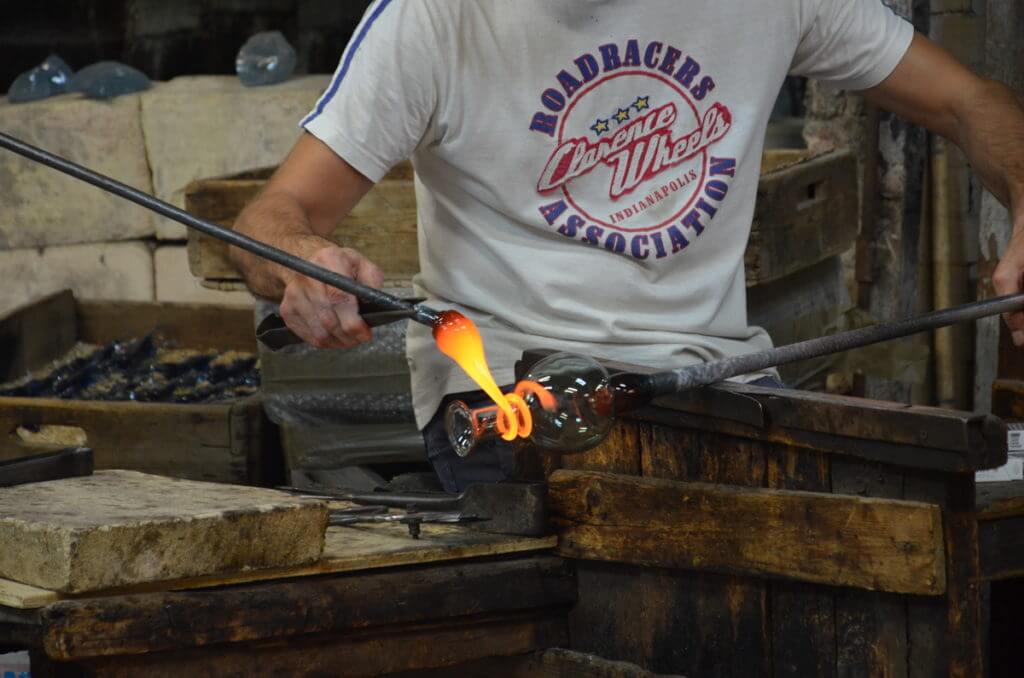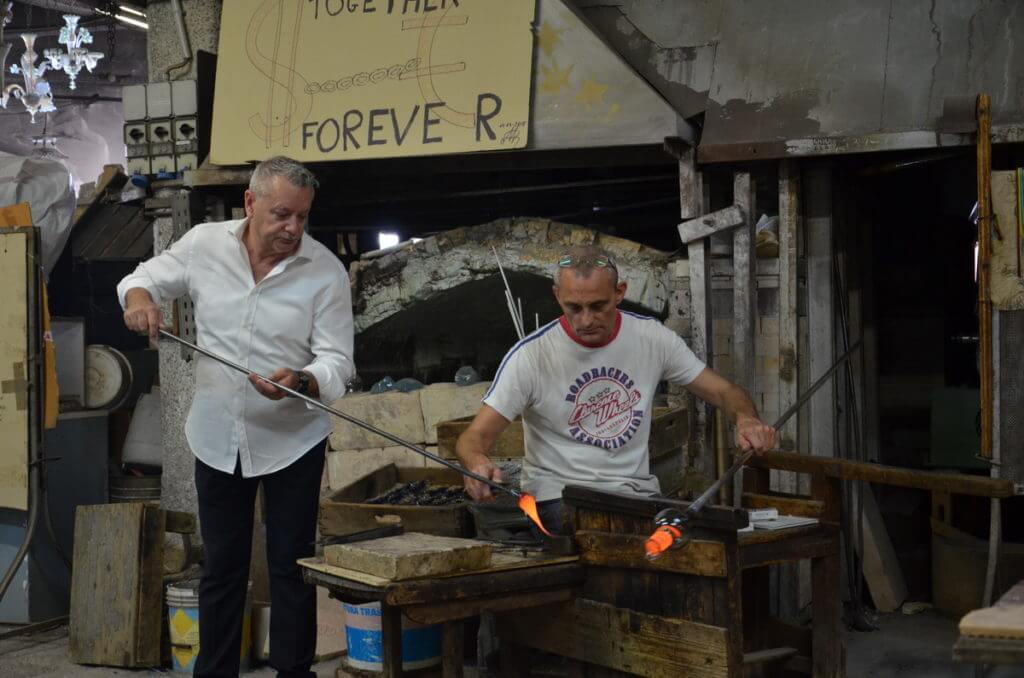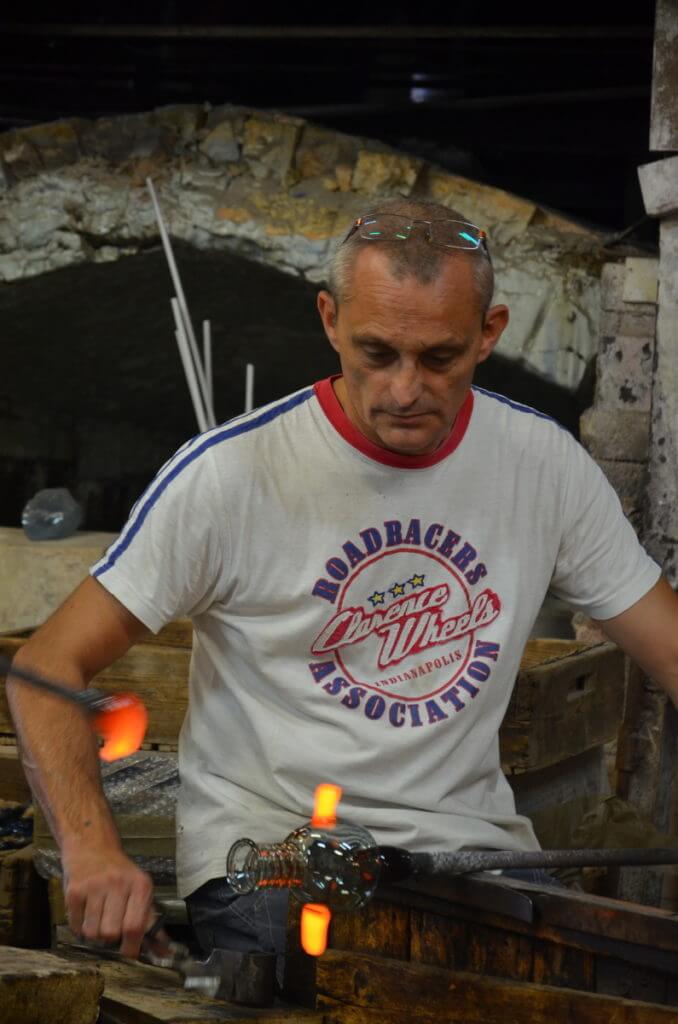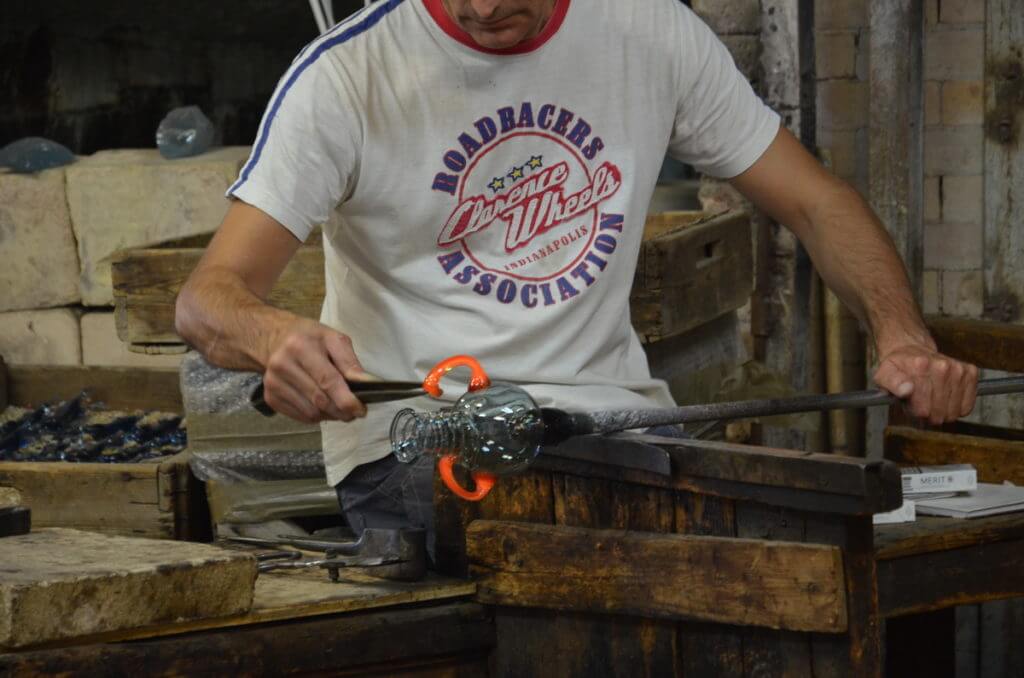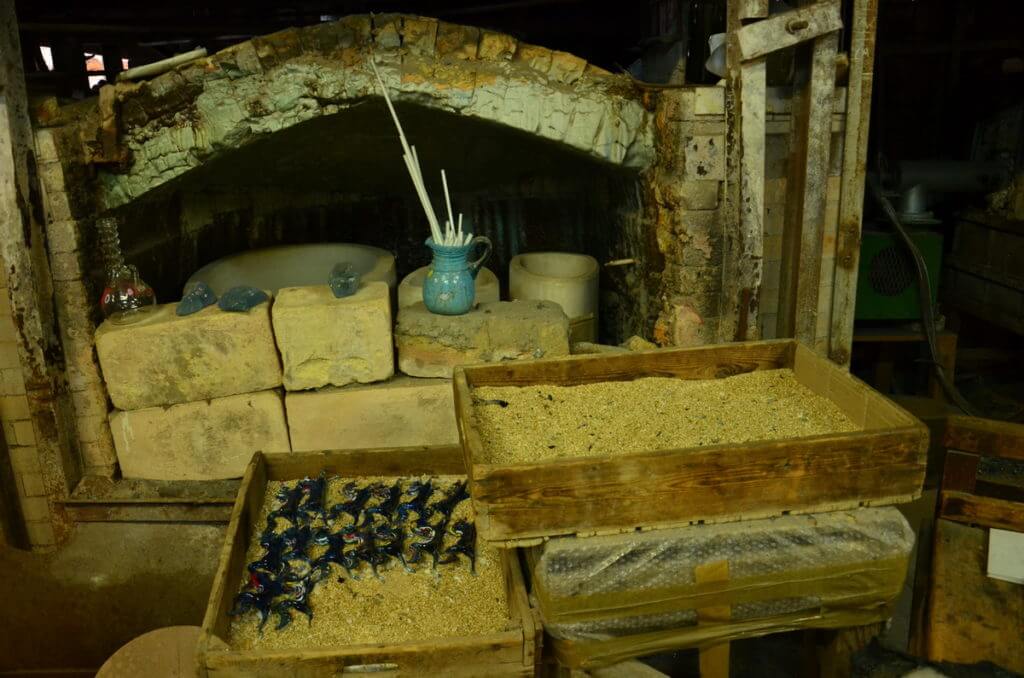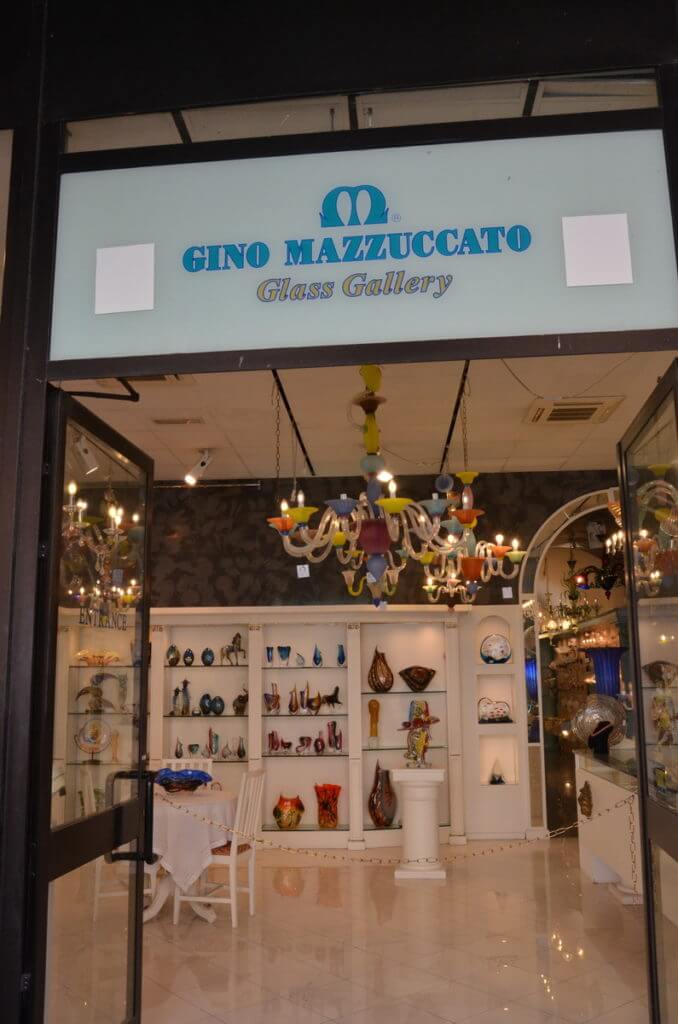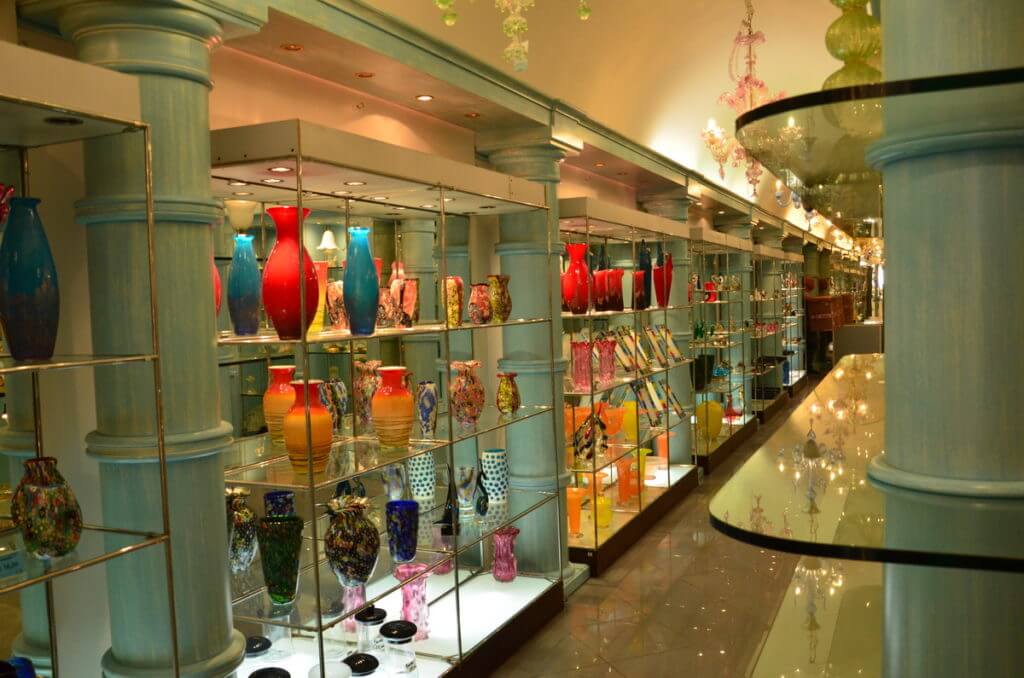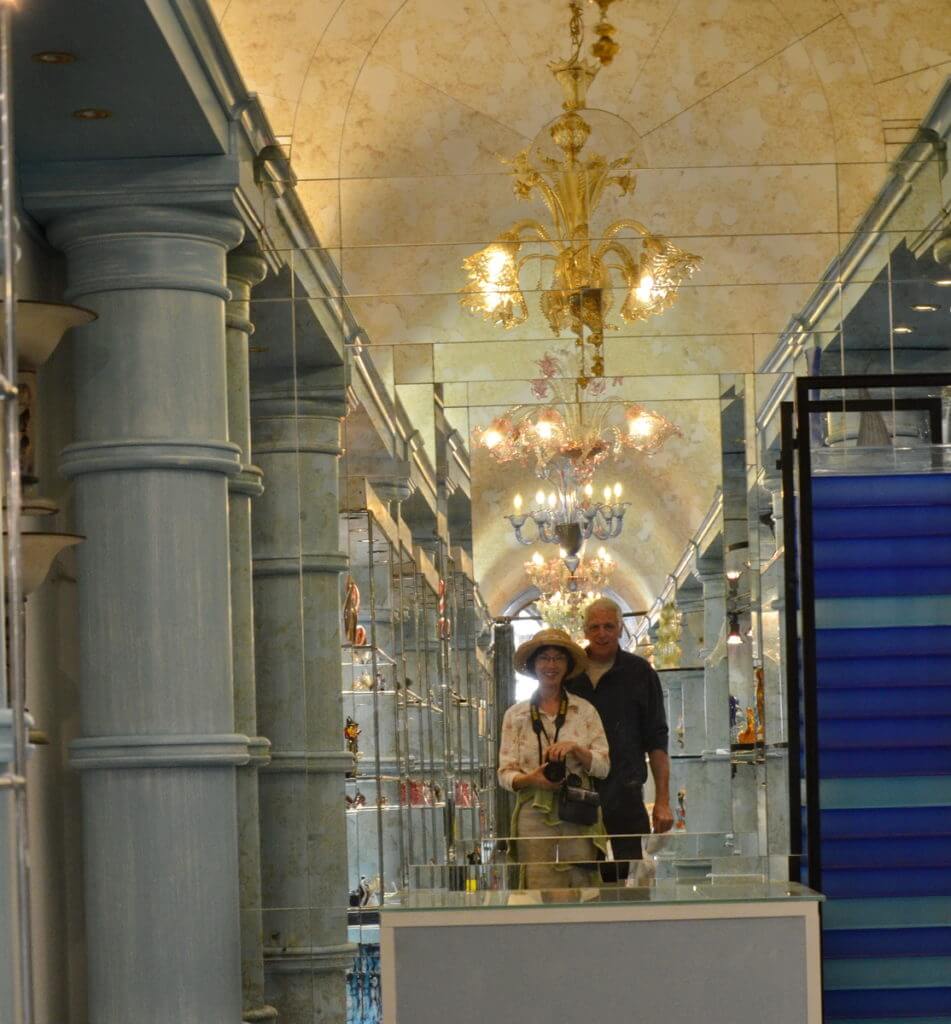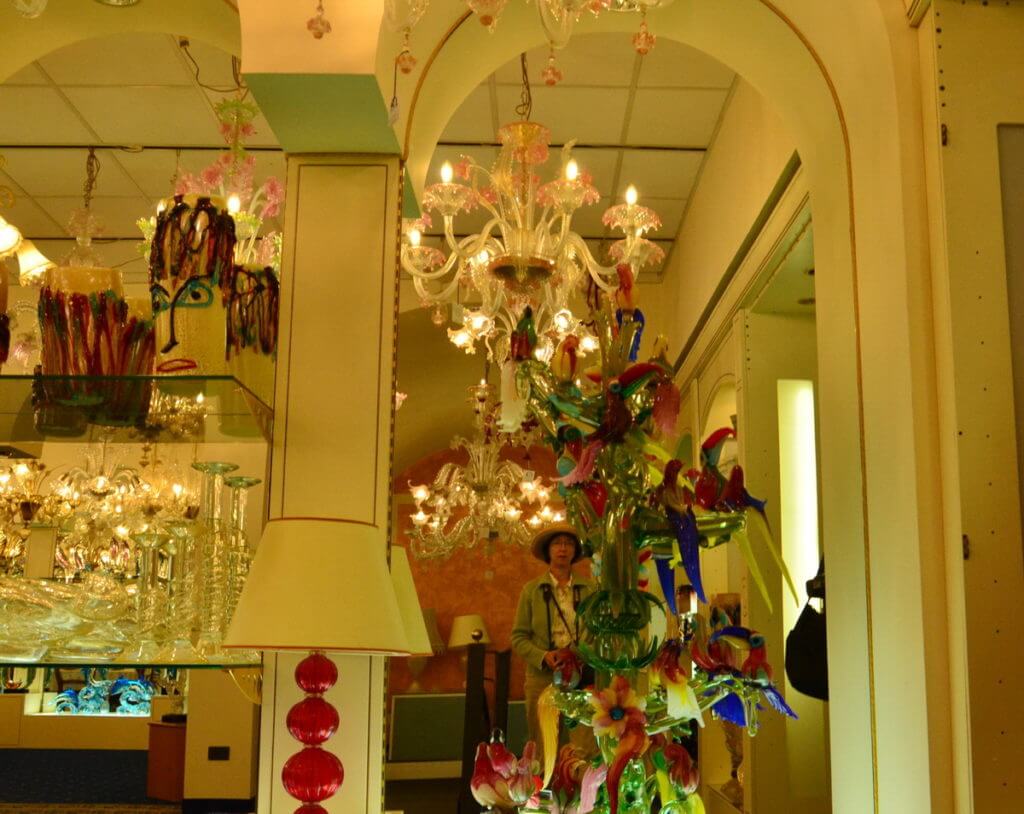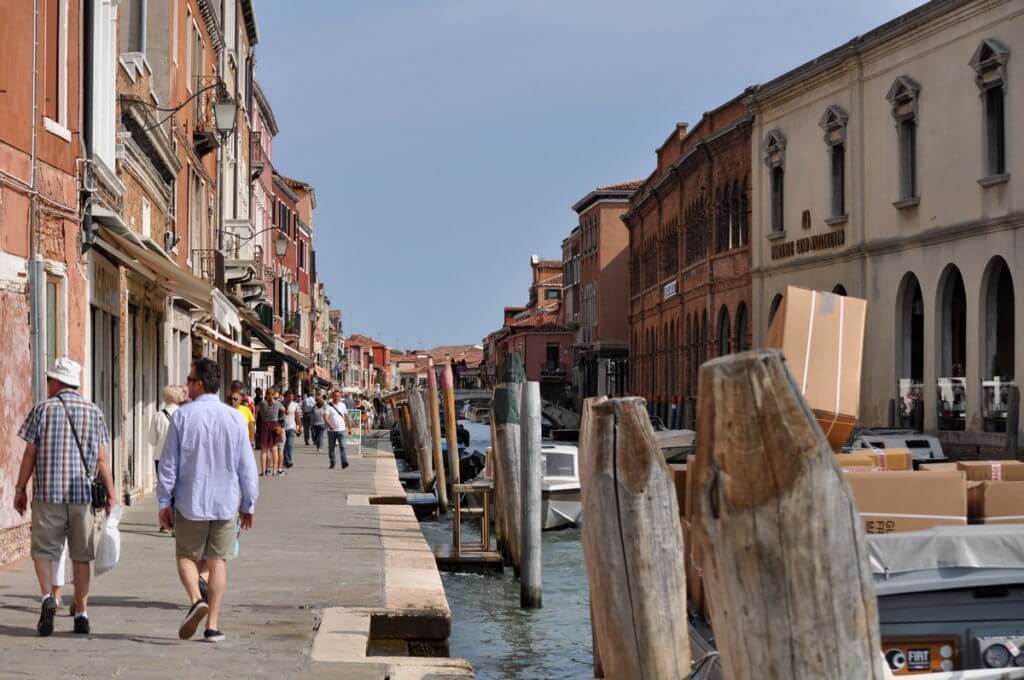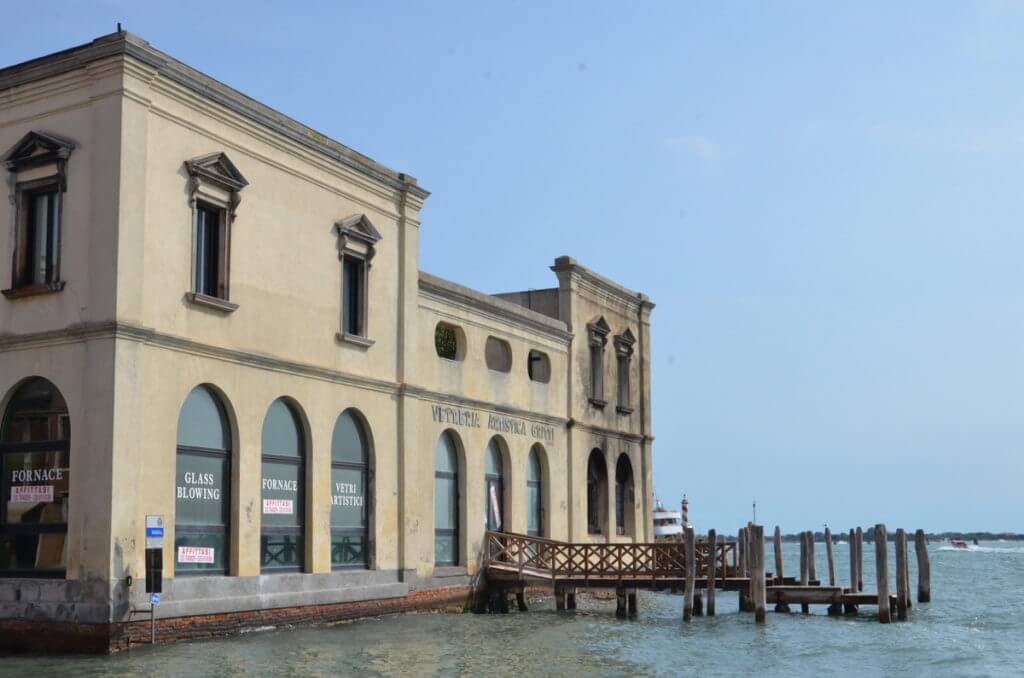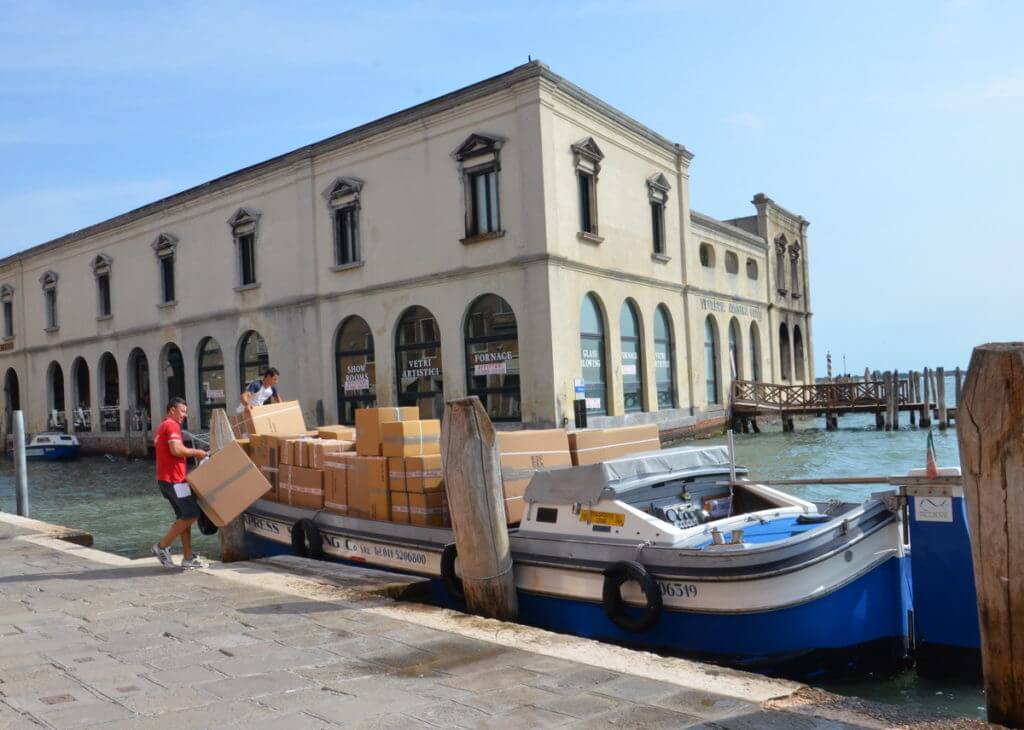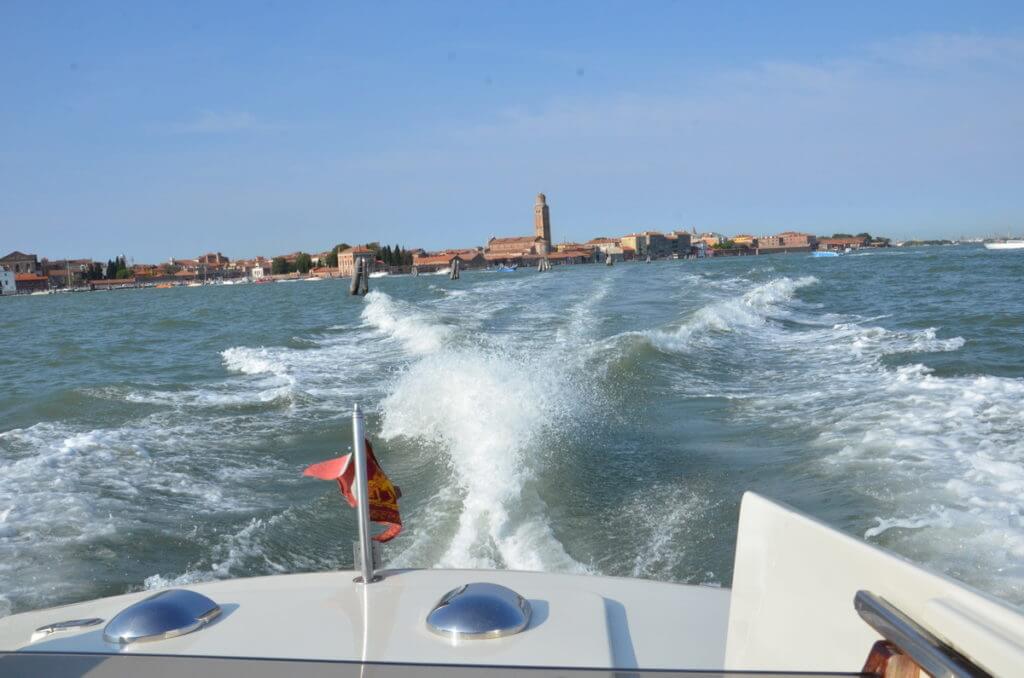Murano Glass in the Making In Venice
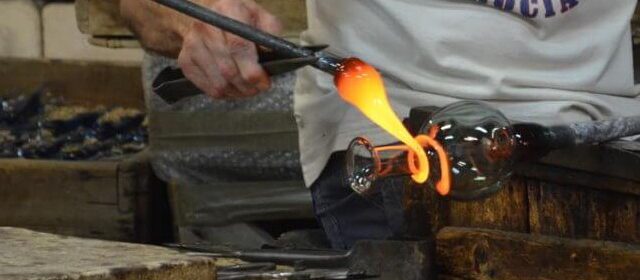
Unique creations in Murano glass are a common sight in every shop around Venice, Italy. On our first full day in that city, Bob and I were given the opportunity to observe how this handmade glass is made using ancient techniques and recipes.
As we headed out for breakfast, we found the city slowly coming to life. St. Mark’s Square was moderately populated, the ocean liners having yet to ferry their passengers ashore.
With shadows gradually falling away from the rooftop of St. Mark’s Basilica, Bob and I could better appreciate the wonderful carvings and statues that were hidden in darkness the previous evening.
Canal-side tables sat waiting to be claimed by patrons, and residents were heading off to work.
Once at the edge of the Grand Canal, Bob and I had a lovely view of Basilica Santa Maria della Salute on the tip of land where the Grand and Giudecca Canals meet.
Santa Maria della Salute was built as an offering in thanks for deliverance from the ravages of the Plague. Construction began in 1631. Today, most of the art housed within bears some relevance to the Black Death.
When a huge cruise ship made its way from the Adriatic Sea into the Venetian Lagoon and on into Giudecca Canal, the shore of the island of Giudecca was suddenly blocked from our view.
At a snail’s pace, the cruise ship edged alongside Santa Maria della Salute.
The size of the cruise ship dwarfed not only the water taxis and vaporettos but also the buildings of Venice. For several years, people concerned about the fragile and unique location have petitioned and protested in favour of banning mega cruise ships and container ships from entering the Venetian lagoon and canals.
Finally, in 2021, laws were passed to protect this UNESCO World Heritage Site from the potential danger posed by mega ships. Prior to this decision, UNESCO was considering putting Venice on the list of Endangered World Heritage Sites.
The integrity of building foundations in Venice is severely affected by turbulence from boat propellers and the daily rise and fall of the saltwater tide. We were amazed to learn that Venice is built on a foundation of 10,000,000 wooden piles, mainly trunks of alder trees that were pounded into the mud of the lagoon. Brick cladding protects the foundations of the buildings that sit atop platforms in turn supported by the closely packed pilings.
Bob and I were in no hurry and had planned to do a walking tour to take in the ambience and history of Venice. Out of nowhere, a gentleman approached us and offered a free taxi boat ride to Murano Island and a free tour of a Murano Glass Factory. We jumped at the chance remembering how much we enjoyed touring the Waterford Glass factory in Ireland.
Next thing you know, we were being whisked across the water leaving Santa Maria della Salute behind us.
Doges Palace shimmered pink in the morning light where it sat perched on the edge of the Grand Canal.
A plethora of gondolas in a tidy row bobbed on the water while the gondoliers prepared to delight tourists with slow and leisurely rides on the Grand Canal.
The Grand Canal was bustling with activity. Ferry boats coming and going, loaded with sightseers and residents hopping a ride from one island to another.
Through a series of canals, our escort guided the vaporetto. We were the only 2 passengers onboard. A short while later, Murano Island came into view.
The Murano Lighthouse welcomed us to Murano Island where it stood proud on the southeast shore of the island. It replaces the original metal tower that operated from 1912 until 1934.
As we neared our destination, we slid by many Murano glass factories. Venetian glassmaking dates as far back as the 8th century when glassmakers from Aquilea, Italy escaped from marauding barbarians to the Venetian Lagoon bringing their skills with them. Marco Polo “fornace” is named after the famous Venetian merchant and traveler.
Most of the Murano glassmaking industries are concentrated on Murano Island because a law was passed in 1291 confining glassmakers to the numerous islands that make up Murano. The furnaces that make the molten glass posed too much threat of a fire getting out of control and devastating the wooden buildings that make up Venice.
Our tour was to be in the Gino Mazzuccato Glass Factory.
The artisans gave a brief explanation to Bob and me as to what was in store.
The tools of the trade have not changed much over the centuries. Here, the artisan is holding a blow pipe or canna da soffio that was used to gather molten glass from the furnace much like gathering liquid honey on a honey dipper. The shaping began by rolling the soft glass on a marver, martore, the steel surface of a table.
Marvering cooled the glass somewhat, and then the artisan blew air through the blow pipe to create a bubble, bolus.
Seated at his workbench, scagno, and using a pair of large glass-cutting clippers, tagiente, the artisan cuts or constricts the pliable glass.
A closeup of the glass-cutting clippers, tagiente.
Every furnace has an opening called a glory hole through which glass is reheated. In this photo, we see the artisan placing the bubble into the furnace to gather more molten glass on it. The temperature inside the furnace, fornace, is around 1500° Celsius.
I believe that the artisan in this photo is using a pair of tweezers to grasp and stretch the glass to form the mouth of the vessel.
An assistant had gathered some molten glass from the furnace in order to add features to the vessel.
As the vessel was rotated on the end of the blow pipe, the artisan controlled the application of molten glass by utilizing a pair of tweezers to stabilize the second blow pipe.
With one hand, the artisan rotated the blow pipe securing the vessel in order for the molten glass to be applied in a circular pattern.
We were fascinated with the process. It was mesmerizing.
With the neck of the vessel now adorned, it was time to add more molten glass to form handles on the piece.
On either side of the glass object, a blob of molten glass was applied.
Quickly, using tweezers, the artisan stretched the molten glass to shape and position handles.
Bob and I were pleased to gain a rudimentary understanding of how Murano glass is made. These particular objects would shatter within a short length of time because they were made solely for demonstration purposes.
Objects that are made for sale are treated to a slow cooling-down process that ensures the longevity of the processed glass.
With the demonstration complete, Bob and I were then escorted into the showroom. We were given strict instructions: no photos allowed.
Secret recipes and techniques for making glass have been developed and passed down through the generations. For decades, the trade secrets were safeguarded by having the glassmakers concentrated in one location on Murano Island. At that time, laws prohibited them from leaving Murano unless they secured government permission.
During the 13th and 14th centuries, if glassmakers left Murano without permission or revealed trade secrets, they were punishable by death. On the other hand, special privileges were also given to glassmakers. In the 1300s, during the 5 hottest months of summer, glassmakers were allowed to be on vacation.
As well, if a glassmaker’s daughter married a nobleman, no loss of social status occurred, and in fact, the pair’s offspring were declared nobles.
There is a long history of innovations that resulted in various treatments of Murano glass to create different effects. By the 15th and 16th centuries, Murano had risen to be Europe’s luxury glassmaking centre.
Our tour complete, Bob and I set off to do a little exploring on Murano Island.
Glass factories were everywhere as would be expected.
A good share of Murano glass is distributed through the gift shops in Venice, and boat loads of completed Murano glass articles were being loaded for transport across the water.
We soon decided that it was time to head back to Venice and hopped onto a water taxi.
With Murano Island fading in the distance behind us, Bob and I looked forward to spending the rest of the day touring Venice’s historic sights and gift shops. There was so much more to see!
Related:

